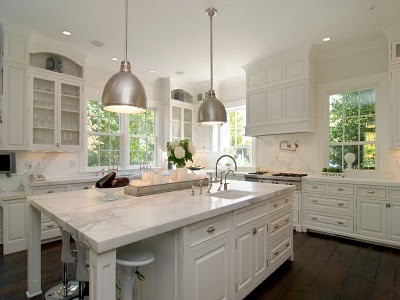Create a Magnificent Focal Point with Sophisticated Legs For Kitchen Island
Create a Magnificent Focal Point with Sophisticated Legs For Kitchen Island
Blog Article
Essential Elements to Take Into Consideration When Picking Legs For Kitchen Island
Choosing the appropriate legs for a kitchen area island entails a cautious analysis of multiple aspects that can significantly influence both capability and visual appeal. As we check out these components, it becomes clear that each choice can have far-ranging implications for the general cooking area experience.
Material Options
When selecting legs for a kitchen island, understanding the different product options is vital for attaining both visual appeal and structural stability (Legs For Kitchen Island). The selection of product significantly influences not only the toughness of the island yet also its overall design and performance
Steel legs, usually made from stainless steel or functioned iron, contribute a contemporary and industrial feeling while making sure durability and security. These products are resistant to use and can sustain substantial weight, making them optimal for larger islands.
An additional option is engineered materials, like MDF or plywood, which can be more cost-effective while still offering an array of coatings. Nevertheless, they may not provide the very same degree of stability as strong timber or metal. Finally, materials such as acrylic or glass can develop a contemporary look, though they might need added assistance to guarantee security.
Ultimately, the option of material for cooking area island legs ought to align with the preferred functionality and the general theme of the cooking area.
Style and Layout

When considering style, the shape and coating of the legs are critical. Tapered legs can give a feeling of agility and style, while thicker, extra durable legs can communicate stamina and stability. Additionally, the finish-- be it painted, discolored, or all-natural-- should match the cabinets and countertop materials to produce a unified look.
Additionally, the style of the legs can likewise show individual preference. Custom-made or ornamental legs, such as those including complex makings or distinct geometric forms, can work as centerpieces, including character and character to the kitchen area. Inevitably, the right selection will certainly not only boost capability however also boost the aesthetic appeal, making the cooking area island a standout function of the home.
Elevation Factors To Consider
Choosing the appropriate elevation for kitchen island legs is crucial, as it straight impacts both capability and comfort. The standard elevation for a kitchen island commonly varies from 36 to 42 inches, aligning with typical countertop elevations. A 36-inch height is suitable for cooking and food preparation, allowing for comfy use kitchen area appliances and devices. Conversely, a height of 42 inches is often liked for islands planned for bar seating, suiting taller stools and using an informal eating experience.

It is likewise vital to account for individuals' heights and choices. Personalizing the height can ensure a comfy experience for all member of the family, making the kitchen island an extra satisfying and functional room.
Weight Support
Making certain sufficient weight assistance for kitchen area island legs is essential for both security and capability. The kitchen area island often serves numerous functions, consisting of cooking, read this article dining, and added storage, requiring a durable support framework. When picking legs, it is important to take into consideration the overall weight capability called for based on the island's meant usage and the materials that will be put on it.
The choice of material for the legs plays a considerable duty in their weight-bearing capabilities. Solid timber, steel, and heavy-duty composites normally give exceptional stamina contrasted to lighter products. Additionally, the design of the legs-- whether they are right, tapered, or have a pedestal form-- can influence their capability to disperse weight properly throughout the structure.
Constantly get in touch with the supplier's requirements pertaining you could try here to lots limitations to make sure that the legs can sustain the intended weight without compromising safety and security. In recap, choosing kitchen area island legs with adequate weight support is crucial for developing a useful and risk-free cooking space.
Installation and Upkeep
Correct setup and maintenance of kitchen area island legs are crucial for guaranteeing durability and stability. To start, it is vital to adhere to the maker's guidelines during setup. This frequently includes safeguarding the legs to the island base using ideal fasteners, ensuring that the legs are level and straightened. Making use of a degree device can aid prevent wobbling and improve the overall visual appeal of the kitchen area island.
Once mounted, regular maintenance is essential to protect the honesty and appearance of the legs - Legs For Kitchen Island. For wooden legs, routine cleaning with a damp towel and application of suitable wood gloss can avoid dampness damages and maintain their surface. Steel legs may require a gentle cleansing remedy to remove grease and crud, followed by a dry fabric to avoid rust formation
Furthermore, check the legs routinely for signs of wear or damage, such as fractures or loose joints. Tightening screws or screws as needed can also lengthen the lifespan of the legs. By sticking to these installment and upkeep techniques, homeowners can ensure that their kitchen island remains sturdy and aesthetically appealing for several years ahead.
Verdict

Aesthetic coherence is vital in picking the style and design of legs for a kitchen island, as these aspects considerably affect the total ambiance of the space. Tapered legs can offer a sense of lightness and beauty, while thicker, a lot more durable legs can communicate stamina and security.Selecting the proper elevation for cooking area island legs is critical, as it straight influences both capability and convenience. In recap, choosing kitchen area island legs with appropriate weight support is necessary for producing a risk-free and practical cooking room.
In verdict, choosing legs for a kitchen area island requires careful consideration of numerous variables, consisting of material options, design, elevation, weight support, and installation.
Report this page